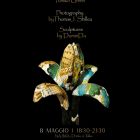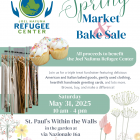Conclave: Cardinals begin secret process to elect new pope
All eyes turn to Rome as the conclave to elect the 267th pope begins.
The papal conclave, the solemn and secretive process in which cardinals convene to choose a successor to Pope Francis, gets underway in the Vatican on Wednesday 7 May.
Following a Mass in St Peter’s Basilica on Wednesday morning, the conclave will begin at 16.30 that afternoon when the 133 cardinal-electors enter the Sistine Chapel ahead of the first vote.
Here they will swear an oath of secrecy before the Sistine Chapel doors are closed and the cardinals begin the centuries-old voting system shrouded in secrecy.
In total there are 252 cardinals from 90 countries but only those under the age of 80 are eligible to elect a new leader of the Catholic Church.
Two of the 135 eligible cardinal-electors have dropped out of the conclave for health reasons: Antonio Cañizares of Spain and John Njue of Kenya.
Conclave demographics
Francis, who died last month aged 88, appointed 108 of the 135 cardinal-electors, many of them from countries far away from the Vatican's traditional European powerhouse.
This conclave will see the participation of 52 cardinal-electors from Europe, 23 from Asia, 21 from Central and South America, 18 from Africa, and 10 from the US.
This international mix offers a more global perspective than ever before and makes it even harder to predict who will emerge from the conclave as the 267th pope and leader of the world's 1.4 billion Catholics.
Italy remains the most represented country in Europe with 17 cardinal-electors however this number is far below the 28 Italian cardinals who voted in the 2013 conclave that elected Jorge Mario Bergoglio as Pope Francis.
Oldest and youngest cardinal-electors
The oldest cardinal-elector in the conclave is Spain's Carlos Osoro Sierra, the retired archbishop of Madrid, who turns 80 in June.
The youngest is the Ukrainian-born Mykola Bychok, 45, who serves in Melbourne, Australia.
Is there a limit to how many cardinal-electors can vote?
This conclave will be the first with more than 120 cardinal-electors since the introduction of the 120 limit in 1975 by Pope Paul VI, a rule reaffirmed in 1996 by Pope John Paul II.
The 133 number breaks the previous record of 115 cardinal-electors in the 2005 and 2013 conclaves, which led to the election of Pope Benedict XVI and Pope Francis respectively.
However the College of Cardinals said last week that Pope Francis had lawfully dispensed with the numerical limit by exercising his supreme authority as pontiff.
Where do cardinals stay during the conclave?
The word "conclave" comes from the Latin cum clavis - meaning "with a key" - reflecting the tradition of locking the cardinals away from the outside world.
During the conclave, the cardinal-electors will reside in the nearby Casa Santa Marta guest house, the former Vatican residence of Pope Francis.
The cardinals will dine together and are served simple meals comprising pasta, rice, soup, boiled vegetables and white meat, along with a little wine but no spirits.
Sworn to secrecy
During the conclave the cardinals are sworn to secrecy and are banned from communicating with the outside world, meaning no phones, newspapers, television or internet.
To ensure there is no external contact or outside influence, the Vatican will use jammers to disrupt phone signals for the duration of the conclave.
Vatican officials involved in the conclave have also been obliged to take an oath of secrecy, under penalty of excommunication.
Papabili
Cardinal-electors will essentially be tasked with choosing whether they want a pope who will continue the reforms and progressive legacy of Francis or whether they want a more conservative candidate.
Ahead of the conclave, several prominent cardinals have been touted in the media as papabili - potential contenders to succeed Francis, who is buried in the Basilica of Santa Maria Maggiore.
Some of the alleged front-runners include Vatican secretary of state, 70-year-old Italian cardinal Pietro Parolin, and Filipino cardinal Luis Antonio Tagle, 67, the latter of whom was seen as a papal contender the last time round.
However Vatican experts are quick to stress the unpredictable nature of conclaves, pointing to the old adage: "He who enters the conclave as pope, leaves it as a cardinal".
Conclave history
This conclave will be the 76th in the form we know today, which was established by Pope Gregory X in 1274.
The Sistine Chapel - built between 1477 and 1480 by Pope Sixtus IV after whom it is named - has hosted every conclave since 1878.
The first conclave held in the Sistine Chapel was in 1492, with several conclaves held in other locations including the Quirinal Palace in Rome, now the official residence of Italy's president.
Some conclaves have even been held outside of Italy.
The conclave of 1314-16 took place in France, during the Avignon papacy.
The last conclave to be held outside of Italy was the Council of Constance, held in Germany from 1415-17, that resulted in the election of Pope Martin V.
The upcoming conclave will be the 26th to be held in the Sistine Chapel, under the gaze of Michelangelo's Last Judgment fresco.
Voting
In line with tradition, the Vatican installed a temporary wooden platform over the chapel's floor, along with wooden tables and cherry wood seats where the 133 cardinal-electors will take their place.
How the Sistine Chapel looks on the eve of the conclave to elect a new pope. Vatican Media pic.twitter.com/Kh0Xe31m0D
— Wanted in Rome (@wantedinrome) May 6, 2025
Cardinals will vote a maximum of four times per day - twice in the morning and twice in the afternoon - until one candidate secures a two-thirds majority.
The new pope will need the backing of at least 89 cardinals to be elected.
The Vatican has also installed a double furnace that has two purposes, one of which is to burn the ballots after votes have been cast.
When to see the conclave smoke
The other purpose of the stove is an ancient custom to signal to the world whether the round of voting has been decisive or not.
If the vote is inconclusive the smoke will be black. If a pope has been elected, the smoke will be white and bells will ring out.
Crowds will gather in St Peter's Square to watch closely the colour of the smoke billowing out through the chapel's makeshift chimney.
The smoke signals traditionally occur at around midday and early evening, around 19.00.
The first smoke from the Sistine Chapel is expected at around 19.00 on Wednesday.
On Thursday the first smoke signal could be at around noon, unless a new pope is chosen in the first round of votes that day, in which case the white smoke would billow out at around 10.30.
If the vote on Thursday morning is inconclusive, the next smoke signal could be expected at 19.00, unless a new pope is chosen in the first afternoon vote, in which case the white smoke would appear at around 17.30.
How long will the conclave last?
Since the start of the 20th century, most conclaves have lasted two or three days.
John Paul II was elected after eight ballots, over two days, in 1978.
Rome bids farewell to Pope Francis pic.twitter.com/FumpBs0PXo
— Wanted in Rome (@wantedinrome) April 26, 2025
Francis and his predecessor Benedict XVI were both elected in less than two days, in 2013 and 2005 respectively.
The longest conclave in history, in the 13th century, lasted two years and nine months.
What happens after a cardinal gets elected?
Once a cardinal secures the necessary majority, he will be asked by the dean of the College of Cardinals - currently Giovanni Battista Re - if he is willing to accept his election as pope.
If he answers in the affirmative, he will be asked by what name he would like to be known.
Room of Tears
Once a pope is elected, he will be led to the so-called Room of Tears, a small antechamber next to the Sistine Chapel where he dons the white papal vestments for the first time.
The room contains three different sizes of papal outfits - large, medium and small - for the new pontiff to choose from and initially dress in.
Habemus papam
The dean of the College of Cardinals will then appear on the central balcony of St Peter's Basilica and announce "Habemus papam", which translates from Latin as: "We have a pope", before revealing the name of the new pontiff.
The pope will greet the crowds from the balcony and impart a traditional Urbi et Orbi (To the city and the world) blessing, used only at Christmas, Easter and on the election of a new pope.
Sede vacante
Until the election of a new pope, the Catholic Church remains in the Sede vacante period - a Latin reference to the chair of the Holy See being vacant.
Where to watch conclave updates
As the international media descends on the Vatican, conclave news updates will be widely available on social media channels across the world.
Several Italian television networks including RAI and Mediaset will be showing a series of programmes related to the conclave, with extensive live coverage and streaming offered by Vatican Media Live and Vatican Radio.
Conclave security plan
Streets around the Vatican have been closed to traffic as part of tight security measures, with parking restrictions and a series of checkpoints leading to St Peter's Square.
How to get to St Peter's by public transport
The nearest subway stops to St Peter's are the Metro A stations Cipro and Ottaviano.
The FL3 and FL5 regional trains stop at the San Pietro railway station.
The St Peter's area can be reached by the following bus lines: 23, 32, 34, 40, 46, 49, 62, 64, 70, 87, 98, 190F (holiday line), 280, 492, 495, 881, 916, 916F and 982.
Photo credit: Marco Iacobucci Epp / Shutterstock.com.


















